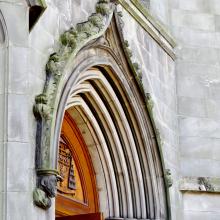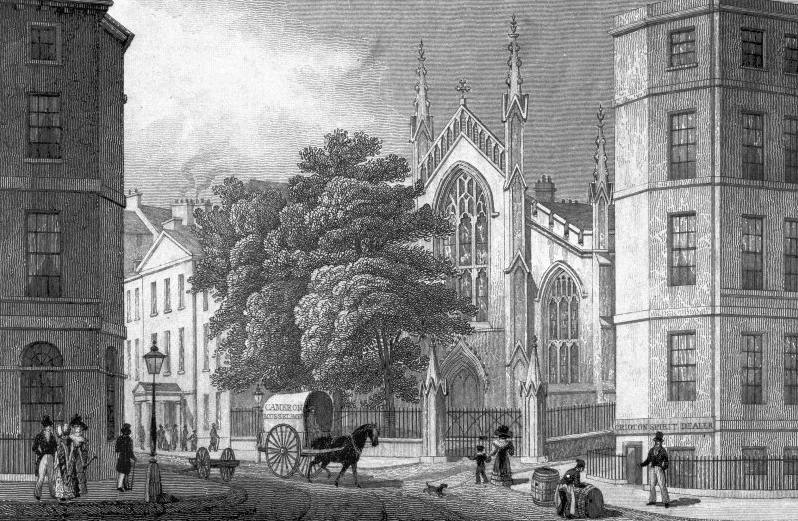
St MARY'S METROPOLITAN CATHEDRAL 1814–2014: MOST BELOVED GATE OF HEAVEN by Darren Tierney
Reviewed by David Hill
I have something to confess. Some of my best friends are churches, Catholic ones.
While I tend to hanker after the Sicilian Baroque or Lombard Gothic, the uplifting qualities of a more local manifestation of divine benevolence, one lurking just west of Picardy Place roundabout, should not be underestimated.
But I didn’t come here to talk about John Lewis.
The adjacent St Mary’s Metropolitan Cathedral, if perhaps not Edinburgh’s most glorious edifice, is as civilised and welcoming as the secular temple next door. Darren Tierney’s new history of what started life in August 1814 as St Mary’s Chapel provides an account of its two centuries of existence.

It is, in part, a fascinating history of the building itself. Did you know for instance, that its roof was successfully raised by 20 feet early in the 20th century? This was a task that celebrated architect Reginald Fairlie, designer of the National Library of Scotland, had thought virtually impossible.
Clearly, there’s no need to listen to an architect’s anxious whine if your task is supervised by the countenance Divine. It’s still a bit squat for my taste, however.

Tierney’s book also gives a decent account of the Cathedral’s chief actors and administration. Successful efforts are also made to situate the building and its staff within wider ecclesiastical and socio-political developments. The author provides useful context without overwhelming detail.
It is copiously, but not lavishly, illustrated, with a focus on the dramatis personæ. If you enjoy perusing stern archbishops, or have a predilection for cardinal red, especially in black and white, this is the book for you.
Other images held more appeal to this reviewer. I particularly enjoyed the sketches for a possible brand new cathedral, a modern building of the St James Centre era. I wish it had been built: a Brutalist church for a brutal age.
Some items dug up from Church records make for fascinating reading. A particular highlight among these is the status animarum (literally ‘state of souls’) for 1949, a register of parishioners in the Broughton Street district.
Herein we discover, among other things, that the McB family was a ‘bad lot’. I strongly suspect that their descendants live in my building. We also discover that a 45-year-old Mrs C was ‘a bit queer’. Why that should have been worthy of comment in liberal Broughton, I don’t know.
While not hagiography, this cohesive work is clearly sympathetic to its subject matter. This reviewer wonders if the sin of omission has been committed by, aside from a brief reference to Cardinal Keith O’Brien, overlooking any more controversial issues which have faced the Church in recent years.
There is, nonetheless, much in this monograph of value and interest. Moreover, while the focus is clearly St Mary’s itself, it ranges widely enough to be a useful addition to local studies.
I look forward to reviewing Volume Two in early 2215.
A shorter version of this review appeared in Issue 238.
Got a view? Tell us at spurtle@hotmail.co.uk and @theSpurtle and Facebook